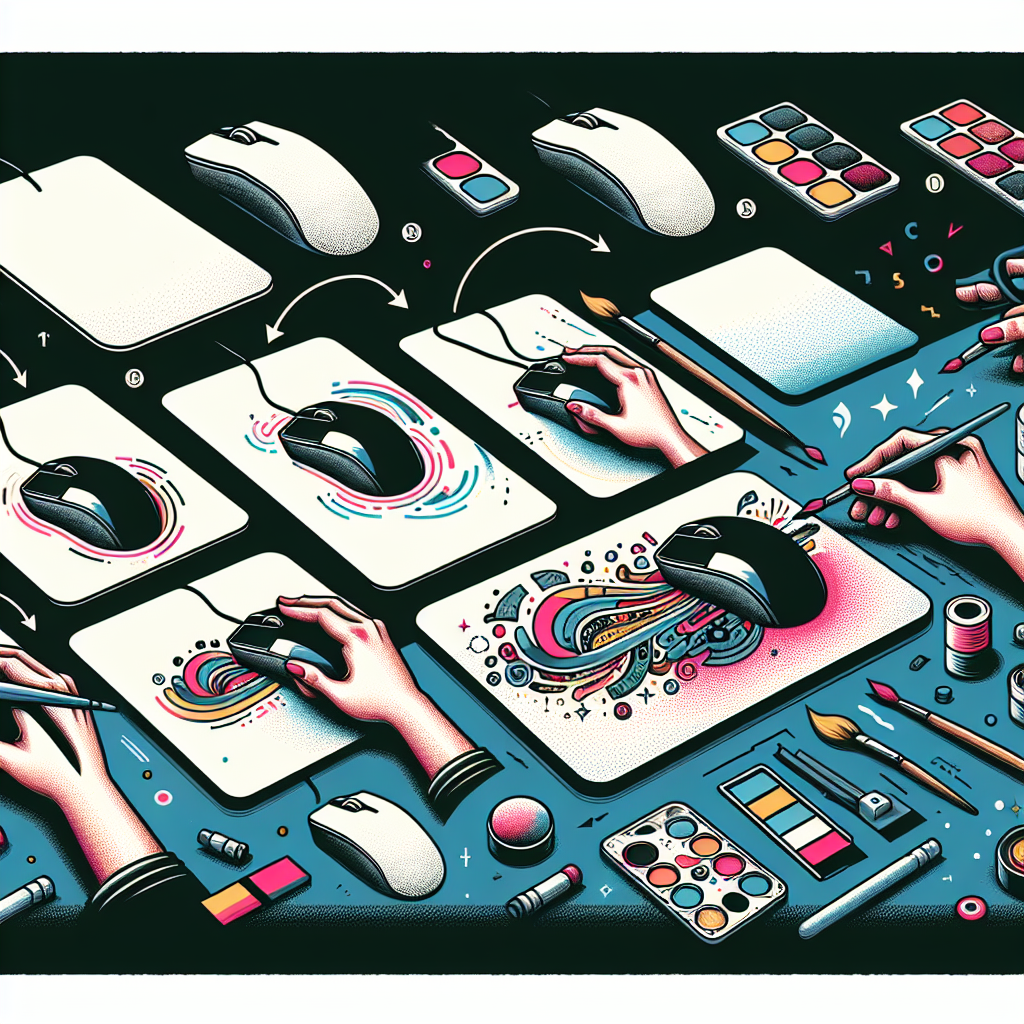Introduction
Mouse pads are an essential accessory for anyone who uses a computer, providing improved functionality, comfort, and style. If you’re looking to add a personal touch to your workspace, you might be asking, Can I customize my own mouse pad? The answer is a resounding yes! With an array of design options and customizations available, you can create a mouse pad that reflects your unique personality and meets your functional needs.
Why Customize Your Mouse Pad?
Customizing your mouse pad offers several advantages:
- Personal Expression: Showcase your style, hobbies, or interests.
- Branding: Perfect for businesses looking to promote their brand with logos or specific designs.
- Functionality: Depending on your needs (gaming, design work, etc.), you can choose textures and materials that enhance performance.
- Gift Ideas: Customized mouse pads make thoughtful and practical gifts.
Customization Options
When it comes to customizing your mouse pad, the options are virtually limitless. Here’s a breakdown of the major choices:
| Customization Option | Description |
|---|---|
| Material | Choose from cloth, plastic, or specialty materials based on your needs. |
| Size | Standard, oversized, or unique shapes to fit your workspace. |
| Design | Add your images, logos, or text using various printing techniques. |
| Thickness | Select from different thicknesses for comfort and control. |
| Surface Texture | Smooth, textured, or hard surfaces for different types of mouse sensitivity. |
Choosing the Right Material
The material of your mouse pad is crucial for both comfort and performance. Here’s a detailed look at the most common materials:
- Cloth: Offers a soft and textured surface, providing excellent control for gaming and design work. It’s comfortable for long usage but may not be as durable as other materials.
- Plastic: Best for speed as it facilitates quicker mouse movement. It’s easier to clean but may not provide the same level of comfort.
- Rubber: Often used as the base for both cloth and plastic mouse pads for added stability and grip.
- Specialty Materials: Some manufacturers offer mouse pads made of unique materials like glass or metal for distinct aesthetics and performance.
Understanding Size and Shape
When customizing a mouse pad, it’s important to consider the size and shape that fits your workspace:
- Standard Size: Typically around 9.25 x 7.75 inches, suitable for most users.
- Extended Size: Larger dimensions (e.g., 36 x 18 inches) provide ample space for both mouse and keyboard.
- Customized Shapes: You can create mouse pads in unique forms, such as circular or shaped designs that reflect your interests.
Designing Your Mouse Pad
The design process is one of the most exciting parts of customizing your mouse pad. Here are some tips to create an eye-catching design:
- Image Quality: Use high-resolution images to avoid pixelation. Aim for at least 300 DPI.
- Color Choices: Understand color theory to make your design vibrant and cohesive.
- Text: Use readable fonts and consider the size and placement of any text to ensure visibility.
- Balance: Ensure that the design is well-balanced without overcrowding any part of the pad.
Where to Get Your Custom Mouse Pad
There are several options for creating your customized mouse pad:
- Online Print Shops: Websites like Vistaprint and Zazzle allow you to upload designs and choose specific customization options.
- Local Print Shops: Support local businesses and consult with them for unique customization options.
- DIY Methods: For the crafty individual, consider customizing a plain mouse pad using fabric paint or iron-on transfers.
Printing Techniques
Depending on where you choose to customize your mouse pad, different printing techniques will be available:
- Full-Color Printing: Best for highly detailed images.
- Silkscreen Printing: Ideal for designs with few colors and when durability is a concerned factor.
- Direct to Garment: Suitable for cloth mouse pads, offering a softer feel to the design.
Care and Maintenance
Once you’ve got your customized mouse pad, proper care is essential for longevity:
- Cleaning: Use a damp cloth for cloth mouse pads. For plastic or rubber versions, warm water with mild soap works best.
- Avoid Sunlight: Prolonged exposure to sunlight can cause colors to fade.
- Storing: Keep your mouse pad flat when storing to prevent warping.
Conclusion
Customizing your own mouse pad can elevate your workspace, making it not just functional but also more personal and reflective of your individuality. From choosing the right materials to selecting designs that speak to you, there are countless ways to express yourself. Whether for gaming, work, or gifting, a custom mouse pad is a small yet impactful way to enhance your everyday computing experience.

